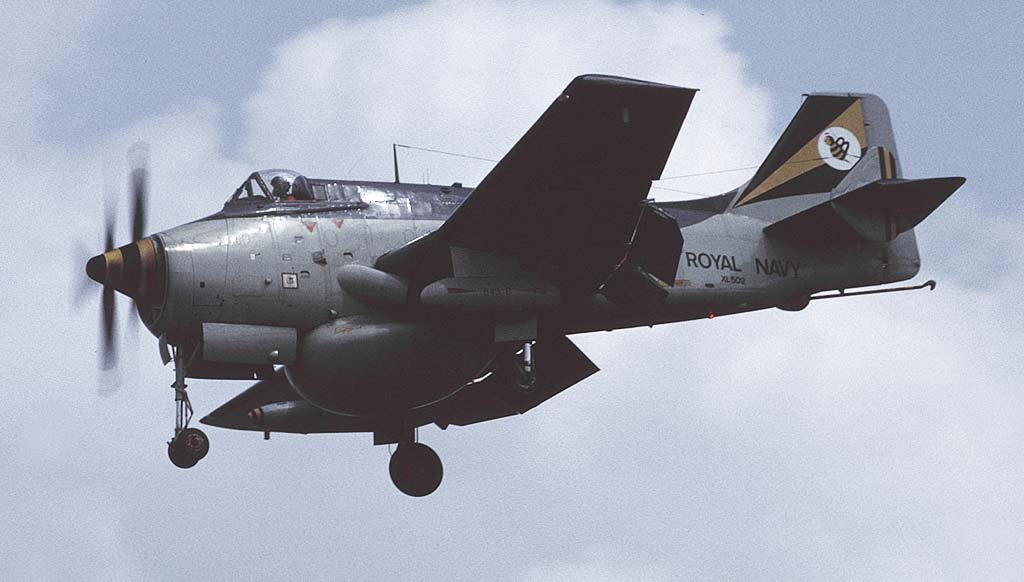The Fairey Gannet was a British carrier-based anti-submarine warfare aircraft, notable for its double Mamba engines and contra-rotating propellers.
The Fairey Gannet, developed in the early 1950s, was an integral part of the Royal Navy’s fleet air arm, primarily designed for anti-submarine warfare (ASW). It was distinguished by its unique double turboprop engine and contra-rotating propellers, which provided significant power while maintaining compact dimensions suitable for aircraft carrier operations. With its ability to carry sonobuoys, magnetic anomaly detectors, and torpedoes, the Gannet was a key asset during the Cold War era, patrolling sea lanes and countering potential submarine threats. Its versatility was further enhanced with roles in electronic countermeasures and airborne early warning, making it a multi-role aircraft until its retirement in the 1970s.
History of the Development of the Fairey Gannet
Post World War II, the emerging Cold War tensions necessitated advancements in naval aviation, particularly in anti-submarine warfare to counter the growing threat of Soviet submarines. This strategic need led to the development of the Fairey Gannet by Fairey Aviation Company.
The British Royal Navy required a dedicated carrier-based aircraft capable of extended endurance, substantial payload, and compatibility with the limited space on aircraft carriers. In response, the Fairey Gannet was conceptualized as a specialized ASW aircraft.
The Gannet’s development program was launched in the late 1940s, with its first flight occurring on September 19, 1949. The aircraft was a result of extensive research and innovation in naval aviation, though it did not receive a specific NATO nickname.
Design of the Fairey Gannet
One of the most remarkable features of the Gannet was its powerplant – two Armstrong Siddeley Mamba turboprop engines coupled to drive a set of contra-rotating propellers. This configuration provided high power while saving space, essential for carrier-based operations.
The aircraft measured 43 feet (13.1 meters) in length with a wingspan of 54 feet (16.5 meters). It was equipped with a tricycle undercarriage and featured a distinctive double-bubble canopy that housed the pilot and observer. The wing could be folded for carrier operations, a necessary feature for storage on aircraft carriers.
The Gannet’s design facilitated its primary role in anti-submarine warfare, allowing for the carriage of a range of detection and attack equipment, including radar, sonobuoys, and a magnetic anomaly detector. However, the design was complex, and the maintenance of the double-engine configuration was challenging.

Performance of the Fairey Gannet
The dual Mamba engines produced a combined power output that enabled the Gannet to reach a top speed of approximately 310 mph (500 km/h) and an operational ceiling of 25,000 feet (7,620 meters). Its range was around 700 miles (1,126 kilometers), an essential feature for extended patrols over sea lanes.
In comparison with other ASW aircraft of the time, such as the American Grumman S-2 Tracker, the Gannet was competitive in terms of endurance and payload but was generally slower and less agile.
Military Use and Combat of the Fairey Gannet
The Gannet was armed with a variety of weaponry tailored for anti-submarine warfare, including torpedoes, depth charges, and later, anti-ship missiles. It played a crucial role in naval operations during the Cold War, patrolling sea lanes and participating in various NATO exercises.
The aircraft’s ASW capabilities were extensively utilized by the Royal Navy, with operational deployments across the globe. However, it did not see combat in the traditional sense, as its primary role was deterrence and surveillance.
The Gannet was also exported to several countries, including Australia and Germany, where it served similar roles. The aircraft was eventually retired from service in the 1970s, replaced by more modern and capable aircraft like the Hawker Siddeley Nimrod.
The Fairey Gannet was a cornerstone of the Royal Navy’s anti-submarine warfare strategy during a critical period of naval aviation history. Its innovative design and specialized capabilities exemplified the advancements in ASW technology and tactics during the Cold War. Although replaced by more advanced aircraft in later years, the Gannet’s legacy remains a significant chapter in the annals of naval aviation history.
Back to the Special Aircraft section.